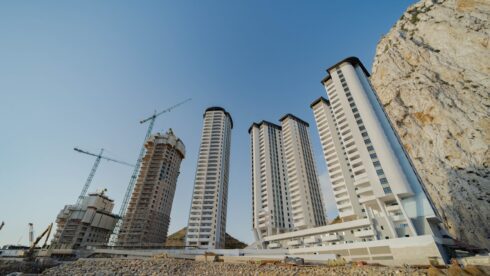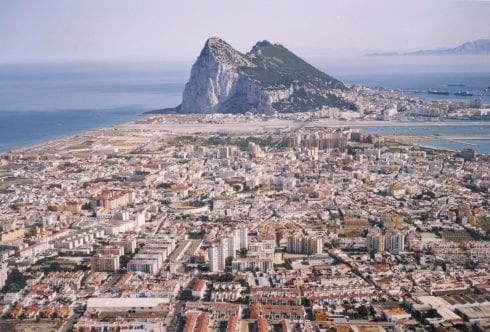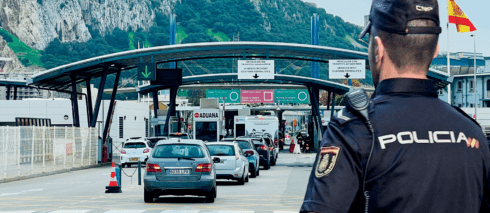GIBRALTAR’S surging population is poised to break the 40,000 barrier in the coming months.
At the close of 2024, the current population of Gibraltar is 39,688, according to the latest United Nations estimates – larger than commonly thought.
It is around 20% more than the World Bank’s figure of 32,000, based on the 2012 census, and Wikipedia’s assertion that 34,000 people dwell on a territory of just 6.7 square kilometres.
It is also a yearly rise of 2.23% – or an extra 858 people living on the Rock, following the trend of a population boom that can be traced back to at least 2017.

The unusually precise UN forecast is for Gibraltar to add a further 791 people in the next 12 months, taking the total population to 40,126 in 2025. The population is predicted to peak at 50,100 in 2070.
The surge comes in spite of the economic uncertainty generated by the inconclusive treaty talks between Gibraltar, Spain and the UK and the threat of a hard border with La Linea.
The economy grew by a China-beating 5.9% this year to nearly £3 billion, but the figures mask underlying weaknesses, according to Edward Macquisten of the Gibraltar Chamber of Commerce.
“If there was one sector that was driving the population boom, it would probably be gaming, or fintech-related businesses,” he told the Olive Press.
“But while topline GDP growth is good compared to most EU economies, a number of sectors such as retail and wholesale are still struggling after the pandemic.”

Macquisten pointed out that between 2006 and 2022 the number of workers on the Rock nearly doubled from 16,000 to 30,000.
“But construction has slowed considerably in the last two years, as developers wait for the outcome of the treaty discussions.
“A lot of building projects are holding off on giving the green light until a positive outcome is announced. “There are over 20 big construction projects ready to go if an agreement can be reached, which will create thousands of jobs in construction directly, and many more indirectly.
“The workers to fill these jobs will come from Spain or Portugal.”
But where are all these people going to live?

The sector in luxury accommodation is humming along in spite of treaty-related gridlock, but this is not going to meet Gibraltar’s needs.
The government has made progress on a cluster of affordable housing estates centred around the Hassans Centenary Towers which are set to add nearly a thousand homes to the Rock’s housing stock.
But for many, this does not truly address the problem of Gibraltar’s swelling requirements.
“Rental homes are what is most needed for all those who cannot afford the so-called low cost housing,” Henry Pinna, who heads up Action For Housing, told the Olive Press.
“And this is something the government has not yet mentioned.

“Even if they were to announce the construction of a few hundred rental homes now, they would not be able to deliver in the three remaining years they have left of their term.”
Pinna and AFH are currently helping around 150 people who are struggling with poor housing, and the numbers are only growing.
The booming population also presents the challenge of so many people traversing such a small territory.
“There’s been an incredible increase in traffic in the last few years,” said Vanessa Byrne, the managing director of OTWO magazine, which focuses on sustainability.
“We have the highest car ownership per capita in the whole world here in Gibraltar, which is nothing to be proud of.
This is why Byrne started the ‘Bus for Us’ campaign two years ago, which has now employed advertising on three public buses to encourage eco-friendly transport options instead of getting in the car.
“We started it as a campaign to support safe cycling back in 2022 because, at the end of the day, whether it’s a bicycle, a scooter, a pedestrian, or a car, it’s still a human being there,” Byrne continued.

Today Byrne and OTWO’s Sustainable Transport Campaign to get people walking, cycling and using public transport has over 100 companies sponsoring the endeavour.
“It shows that people want this, that companies want this, that everyone wants a cleaner, less congested, less polluted Gibraltar,” Byrne said.

To that end, OTWO also organises Gibraltar’s World Bicycle Day, which saw over 200 cyclists pedal around the Rock last June.
With such a growing population, it is more important than ever that Gibraltar pursues a sustainable path, according to Byrne.
“We just can’t sustain the amount of cars. Locally, 45% of our pollution comes from transport, so it is a huge concern.”
While there is no space for new roads, Byrne is pushing for the creation of cycle lanes ‘to carry on this mode of transport.’
Luckily, the government is on board. It already has a ten-year strategy addressing severe traffic congestion and poor air quality – when the population of Gibraltar will be 46,017, according to the UN.







